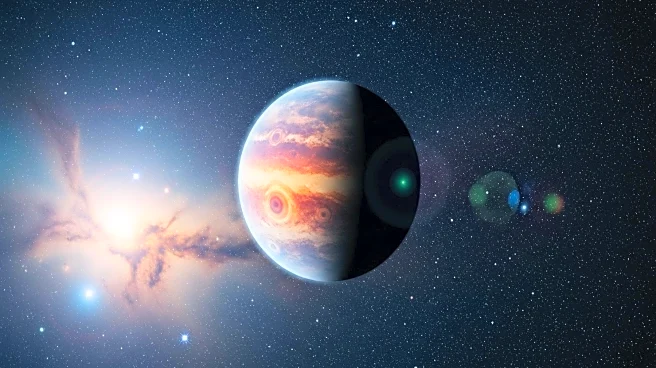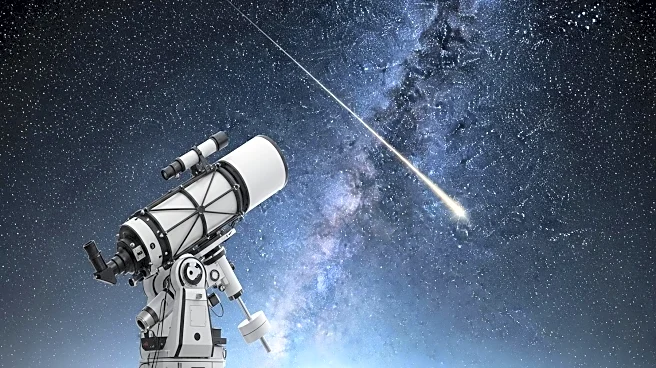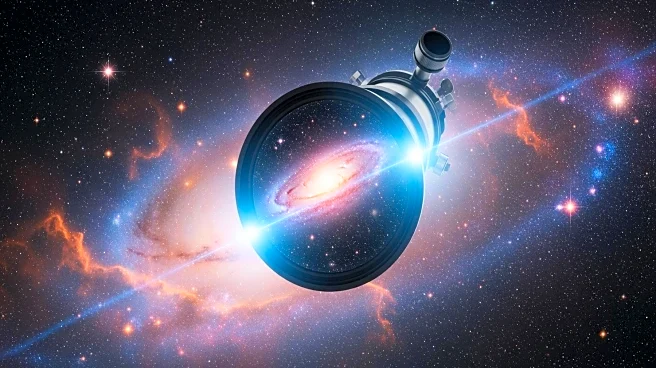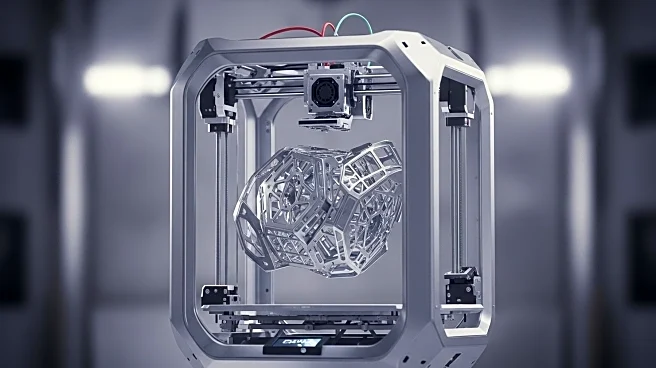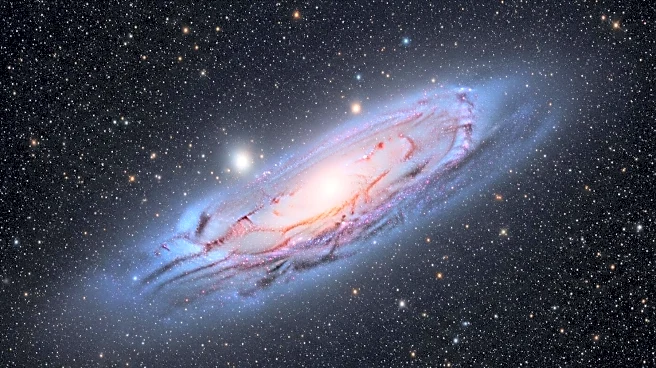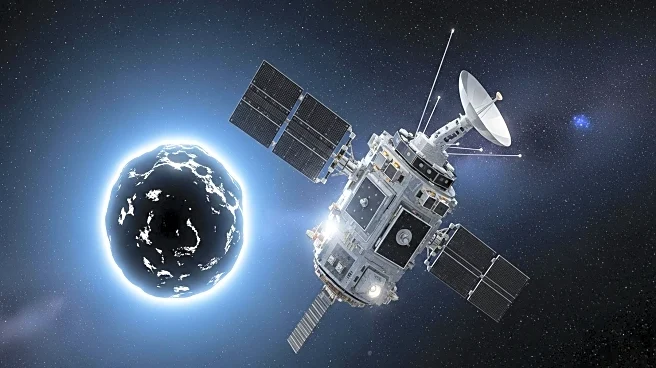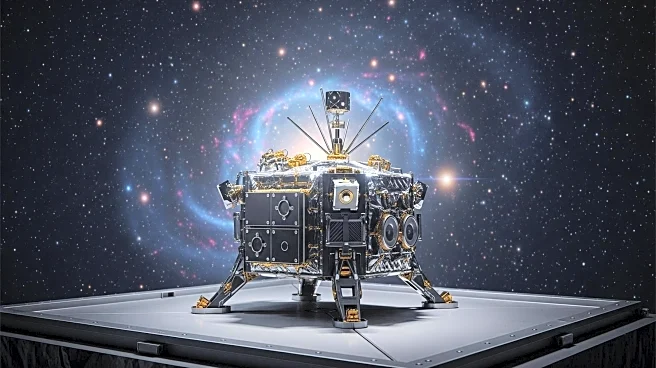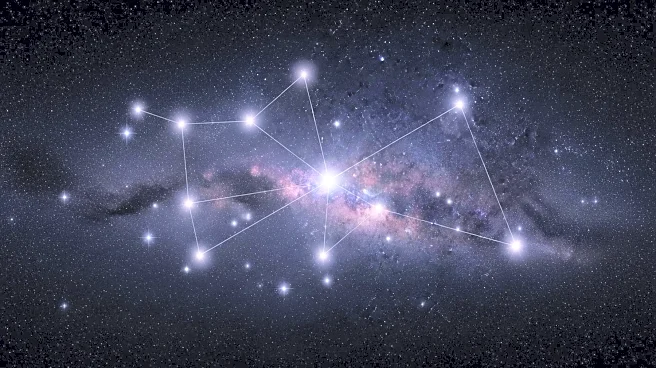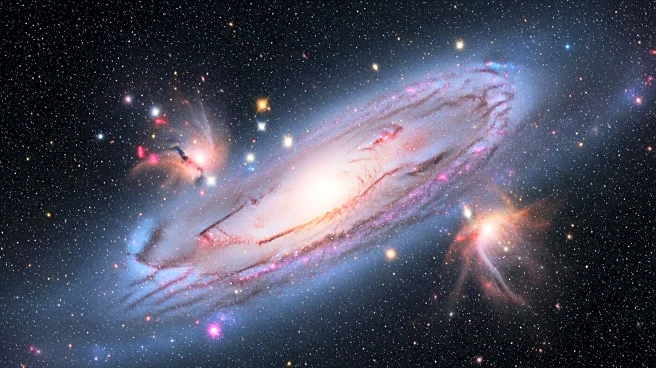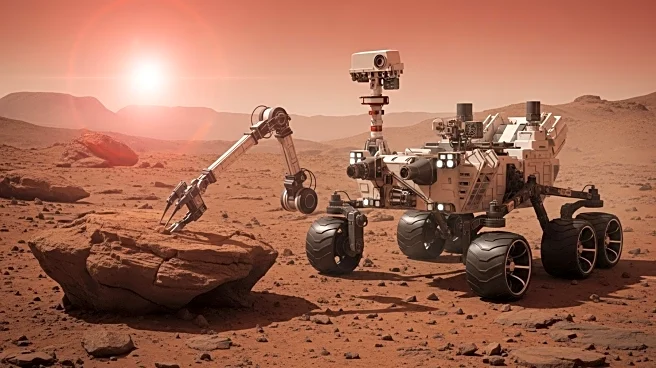What is the story about?
What's Happening?
The European Space Agency (ESA) has released a new 3D map of the Milky Way, showcasing the galaxy's local arm, known as the Orion Arm or Orion Spur. This map, created using data from the Gaia mission, provides a detailed visualization of the Milky Way's structure, including dusty molecular clouds and ionized gas envelopes. The map is built from the precise positions of 44 million stars and includes 87 rare O-type stars, which are massive newborn stars emitting intense ultraviolet light. These stars help reveal the locations of star-forming regions, such as the Gum Nebula and Orion Nebula, in rich detail. The map allows viewers to virtually 'fly' through these regions, offering a panoramic perspective of the galaxy's stellar nurseries.
Why It's Important?
This 3D map is significant as it offers the most accurate representation of the Milky Way's local structure to date. It provides scientists with a realistic glimpse of the galaxy from an outsider's perspective, aiding in the study of how massive stars shape their environments. The map's accuracy builds confidence in visualizations reflecting the Milky Way's actual structure, showing bubbles and cavities in the galaxy's gas and dust caused by stellar radiation. This data is crucial for understanding the life cycle of matter in the galaxy, including how star formation propagates through the galaxy over time.
What's Next?
The Gaia mission's legacy will continue with future data releases, expected in 2026 and 2030, which will contain even more precise measurements. These releases will expand the 3D map further into the galaxy, enabling deeper insights into the Milky Way's composition, star orbits, and history. The ongoing analysis of Gaia's data will help refine models of the galaxy's spiral arms and contribute to understanding its dynamics.
Beyond the Headlines
The new 3D map not only serves scientific purposes but also enhances public engagement with astronomy. ESA has made the map and its visualizations available for public exploration, allowing individuals to experience the galaxy's architecture through interactive tools. This democratization of data fosters a hands-on connection with the cosmos, encouraging educational use and citizen science initiatives.
AI Generated Content
Do you find this article useful?


